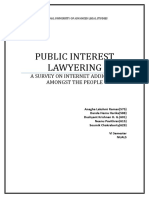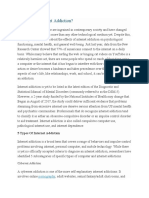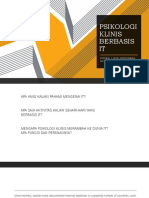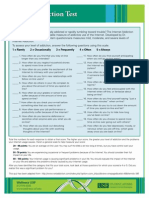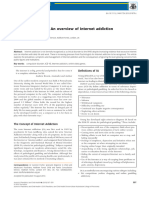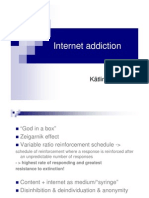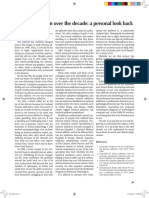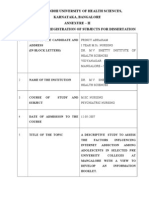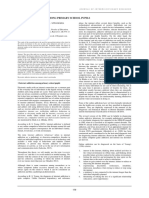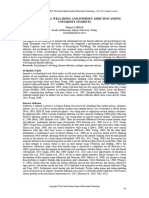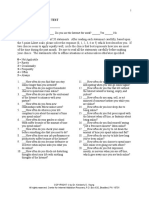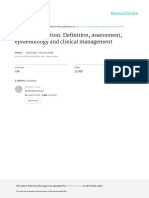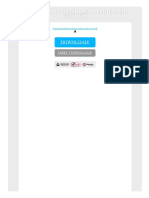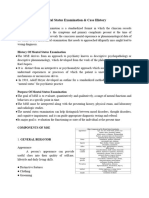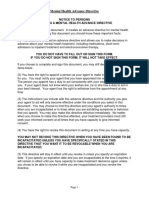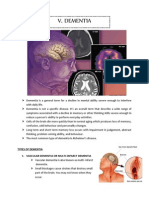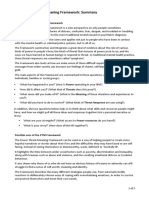0% found this document useful (0 votes)
77 views5 pagesInternet Addiction Among Students: Prevalence and Psychological Problems in Japan
This document discusses internet addiction among students in Japan. It begins by defining internet addiction and reviewing the diagnostic criteria, which are adapted from criteria for pathological gambling in the DSM-IV. It then discusses two screening tools - an 8 item criteria developed by Young based on the DSM-IV criteria, and the 20 item Internet Addiction Test (IAT). The document concludes by reviewing prevalence studies of internet addiction among students in various countries, finding rates ranging from 5.9% to 39.6% depending on the country and assessment tool used.
Uploaded by
ilham rahmatullohCopyright
© © All Rights Reserved
We take content rights seriously. If you suspect this is your content, claim it here.
Available Formats
Download as PDF, TXT or read online on Scribd
0% found this document useful (0 votes)
77 views5 pagesInternet Addiction Among Students: Prevalence and Psychological Problems in Japan
This document discusses internet addiction among students in Japan. It begins by defining internet addiction and reviewing the diagnostic criteria, which are adapted from criteria for pathological gambling in the DSM-IV. It then discusses two screening tools - an 8 item criteria developed by Young based on the DSM-IV criteria, and the 20 item Internet Addiction Test (IAT). The document concludes by reviewing prevalence studies of internet addiction among students in various countries, finding rates ranging from 5.9% to 39.6% depending on the country and assessment tool used.
Uploaded by
ilham rahmatullohCopyright
© © All Rights Reserved
We take content rights seriously. If you suspect this is your content, claim it here.
Available Formats
Download as PDF, TXT or read online on Scribd
/ 5

